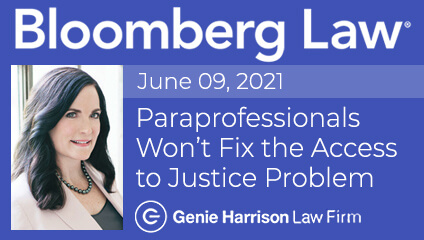Understanding the Equal Pay Act
Read the rights you have if you discover you are making less money than your peers for equivalent work.
August 5, 2020 — by Terri Peters, Architect Magazine
(Read the story below, or here at ArchitectMagazine.com)
The Equal Pay Act of 1963 requires “equal pay for substantially equal work in jobs requiring equal skill, effort, and responsibility,” yet women in architecture and engineering make 84 cents for every dollar men earn, according to 2019 data from the U.S. Bureau of Labor Statistics. That’s $13,000 less per year for the median earner in these professions.
The EPA was a step toward pay parity for women, but it clearly was not enough. Its wording requires the work performed by men or women to be virtually identical. As a result, employers have attempted to avoid liability by arguing that jobs are not substantially equal, explains Los Angeles–based workplace discrimination lawyer Genie Harrison: “Employers point to minutiae in the work responsibilities—assignment to different departments, handling different accounts, or small differences in number of direct reports—to justify pay differentials.” Additionally, anyone bringing an EPA claim must prove that she was paid less than her male counterparts because of her sex.
A worker suspecting pay discrimination should first notify their human resources department—in writing. “Verbal reporting is not advised,” Harrison says. “Reporting in writing should trigger an investigation, which is usually required under the law.” She recommends hiring independent legal counsel with expertise in employment law. “Be prepared to explain your job, identify your male counterparts, explain why your jobs are substantially similar, explain how you know men are being paid more, and provide documents that support your understanding. Be organized, have a chronology of events, and be prepared to explain your perspective.” The prospect of attorney fees can be a deterrent, but Harrison says women can hire legal counsel “on a contingency basis, if they want to bring a case, or on an hourly basis.” She finds that two to three hours of consulting is typically enough to “resolve many issues for women who want to keep their jobs.”
Some state-specific regulations offer employees greater protection, such as the California Fair Pay Act, which broadens the comparator class to be men who engage in “substantially similar work, when viewed as a composite of skill, effort, and responsibility and performed under similar working conditions,” Harrison says. This act also prohibits employers from preventing their employees from sharing wage information with each other, while mandating that employers “retain records of wages, pay rates, and job classifications for three years.”
Nationwide, the Lilly Ledbetter Fair Pay Act of 2009 eliminated the statute of limitations of 180 days after receiving a discriminatory paycheck. Individuals can now file a claim regardless of when they discover their pay differential, even if they are no longer with the employer.
The Paycheck Fairness Act, first introduced in the U.S. Senate in 1997, would have added employee protections, including penalizing employers for retaliating against workers who discuss salaries and placing the burden of justifying pay differentials on the employer. However, the bill has yet to pass despite numerous attempts, the most recent of which was in 2019.
Another significant shortcoming of the EPA is that pay inequity is not limited to gender: A racial wage gap also persists. More data is needed to calculate its exact impact in architecture. “I would love to have access to statistics on the percent of women of color in architecture and how the obstacles they face are muddled by race,” says Kendall Nicholson, Assoc. AIA, director of research and information at the Association of Collegiate Schools of Architecture.
Collecting and offering access to the right salary data are a good start but, as the numbers indicate, pay parity remains a distant goal. This should concern the entire profession if it wishes to attract—and retain—the best talent.





